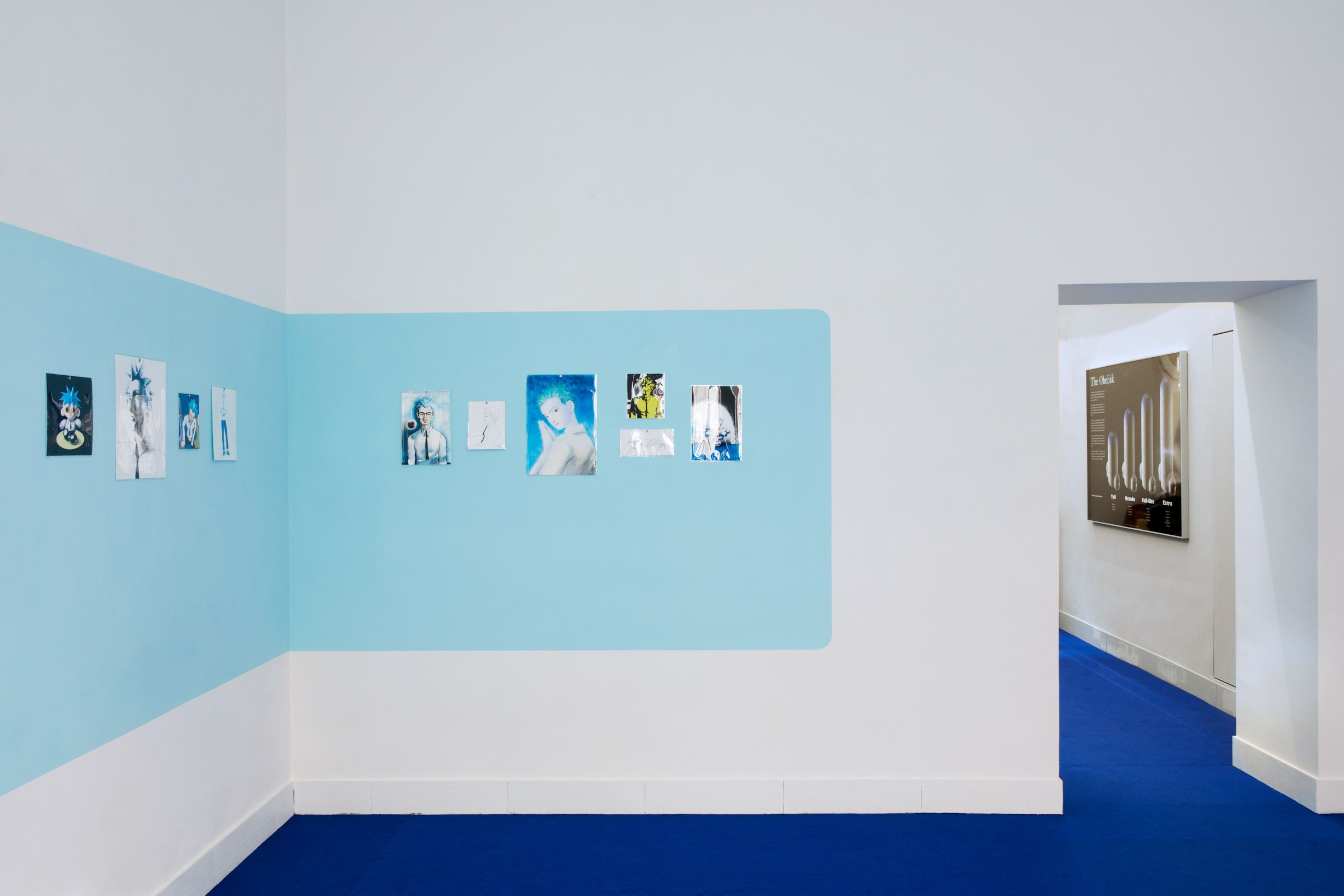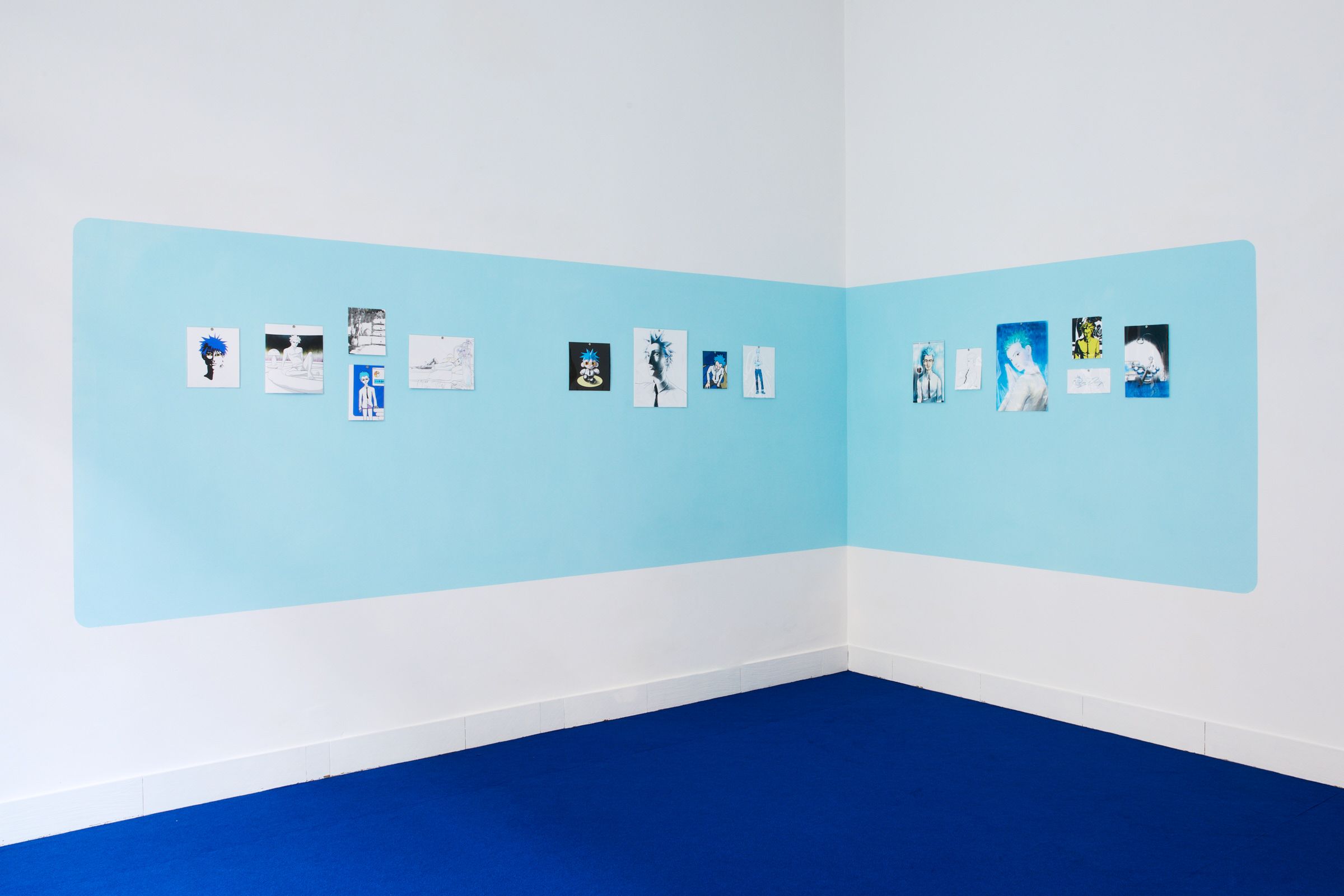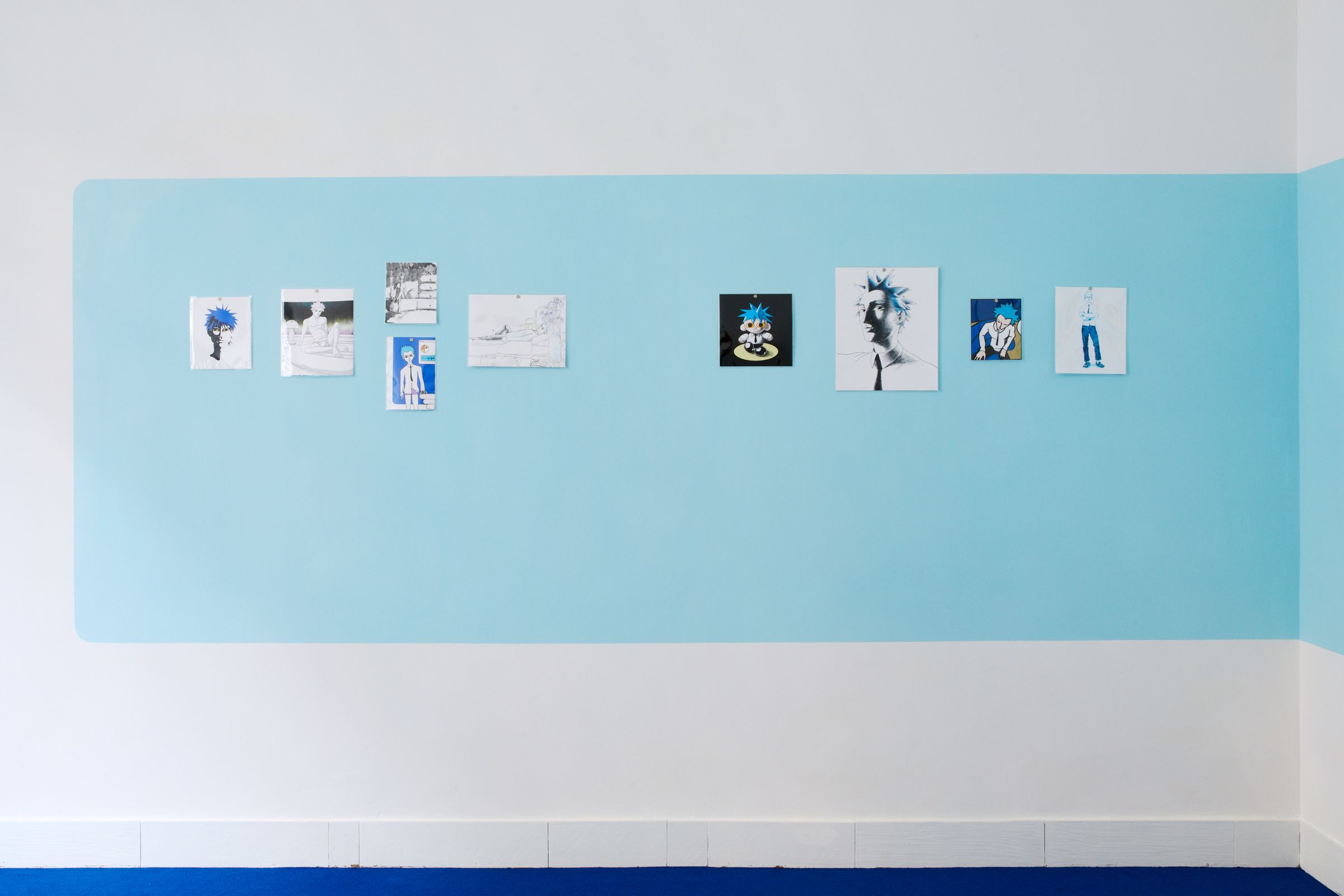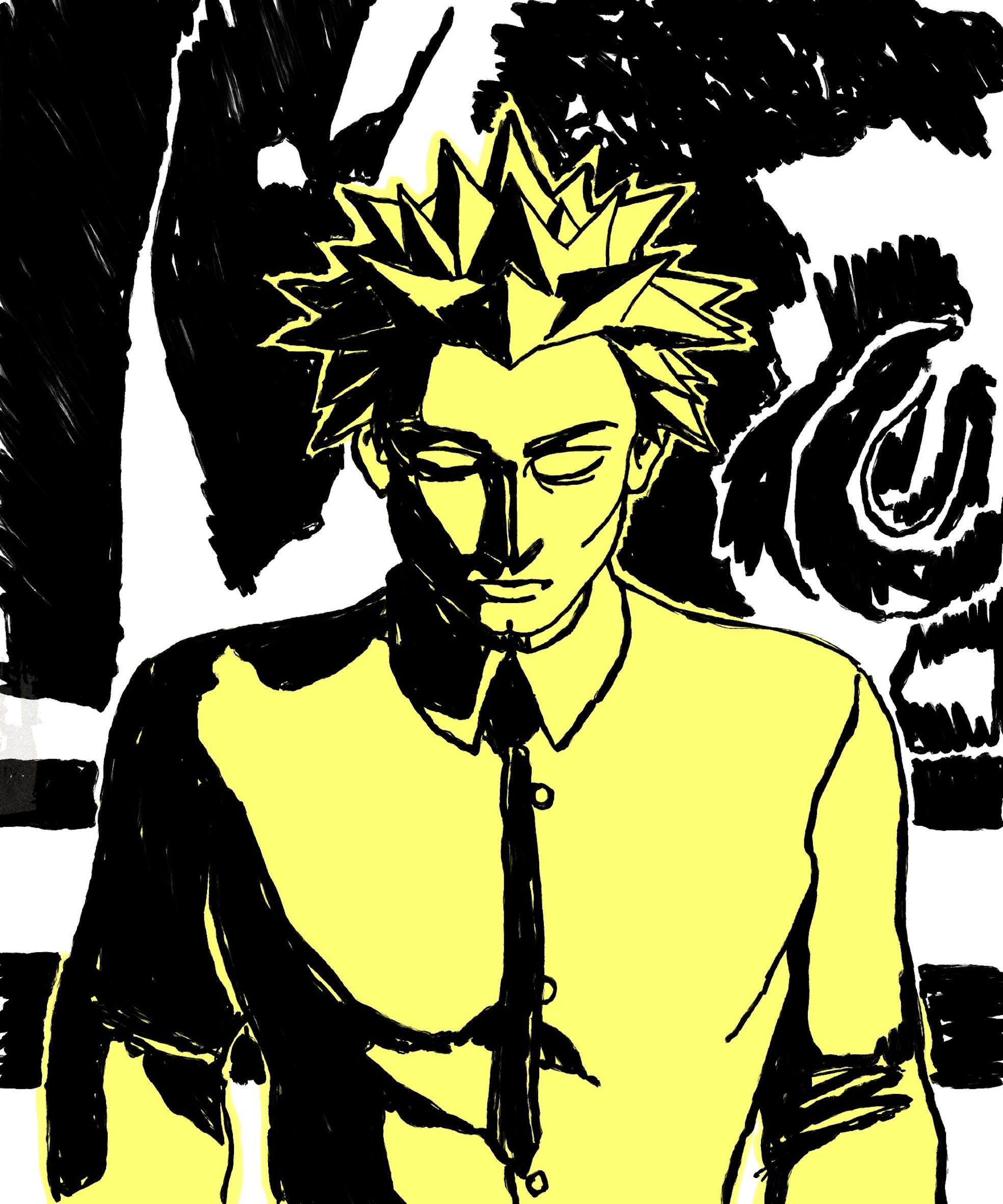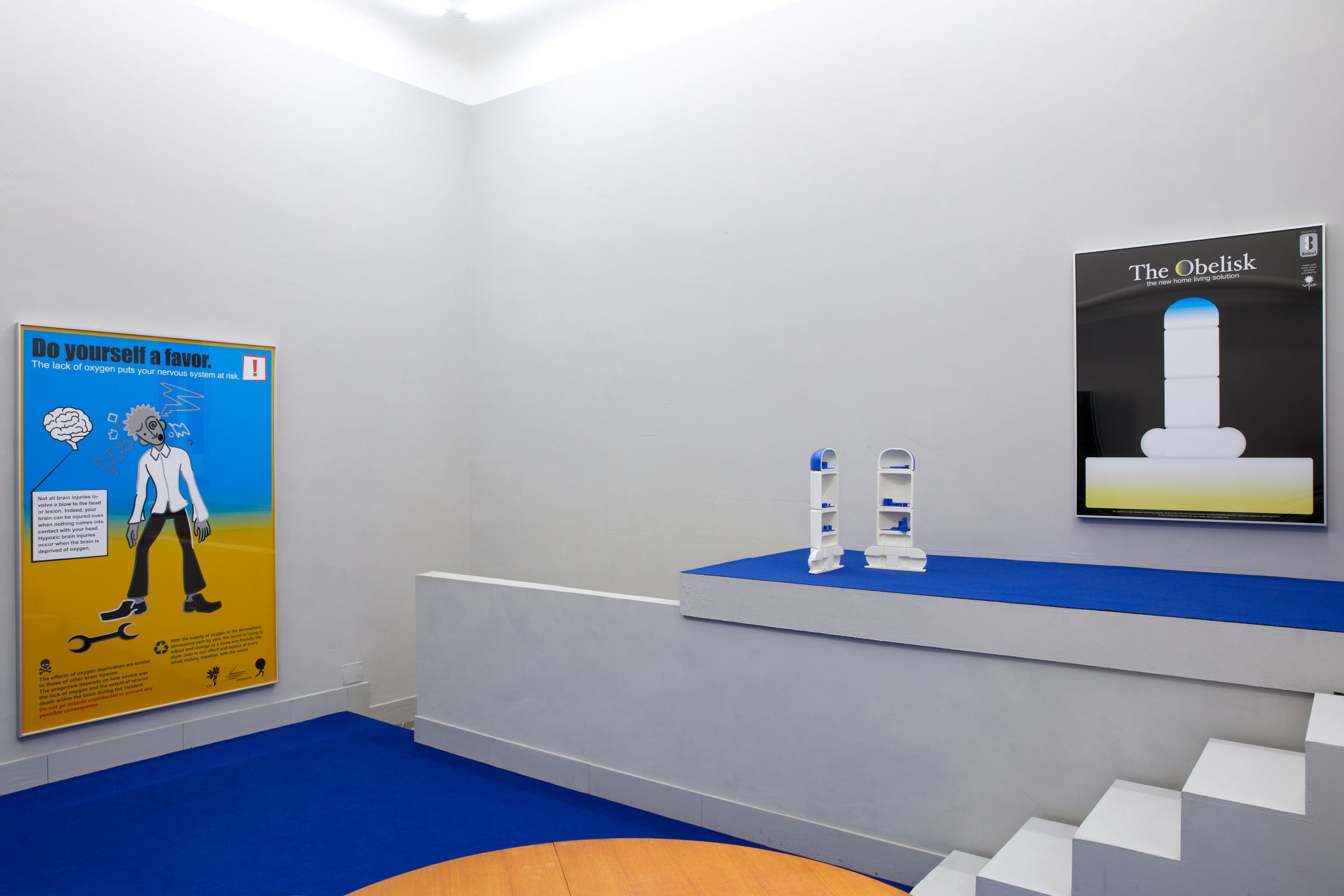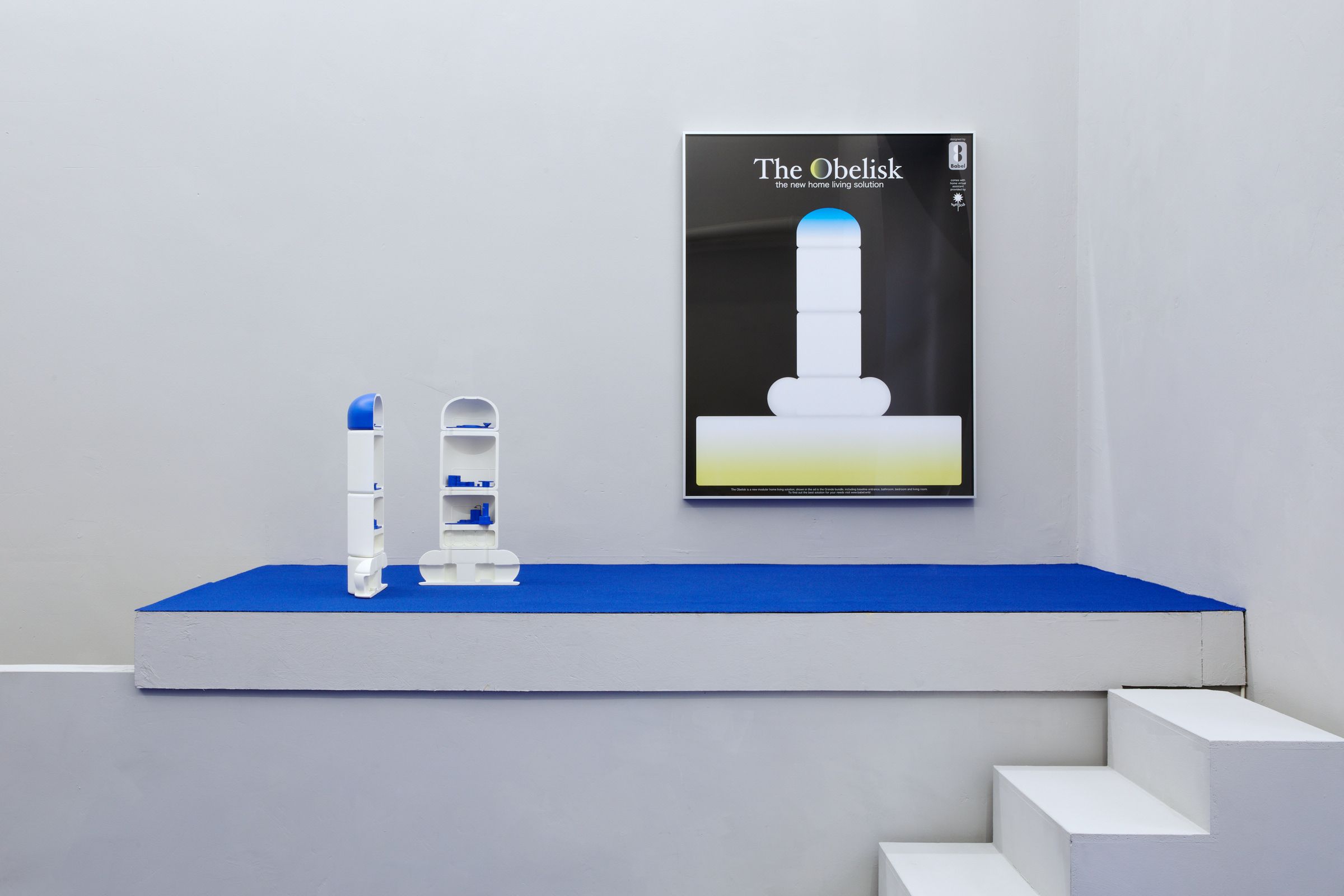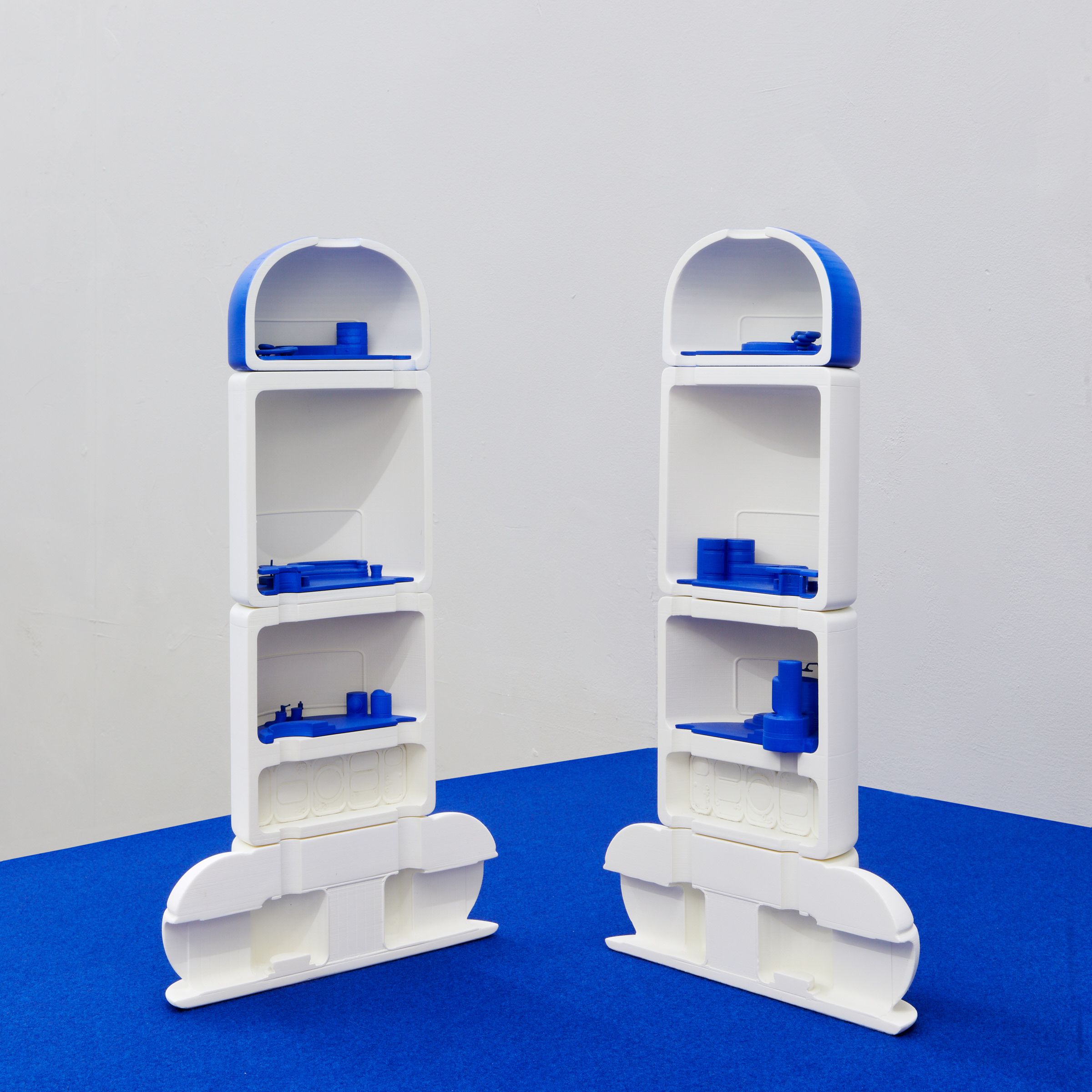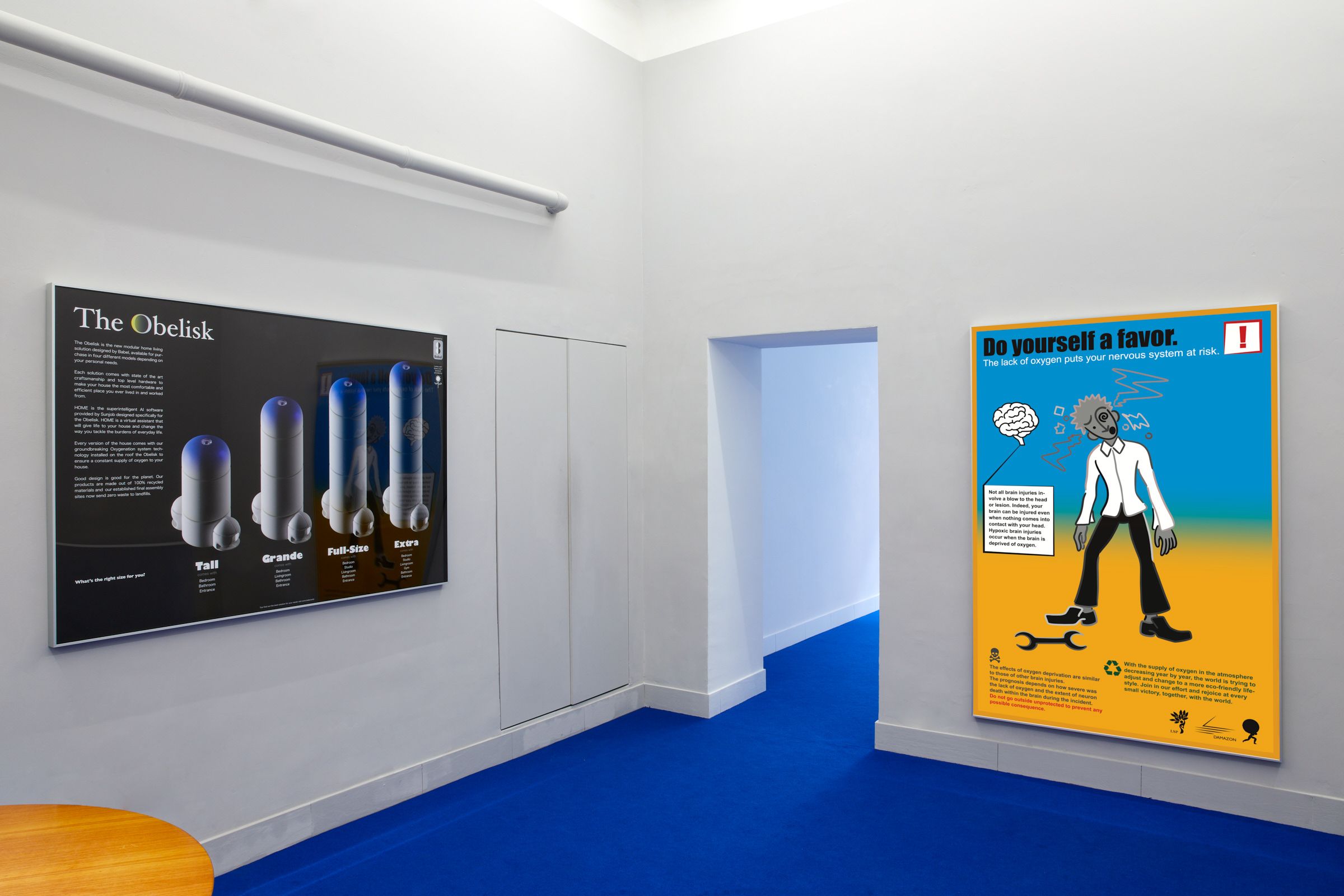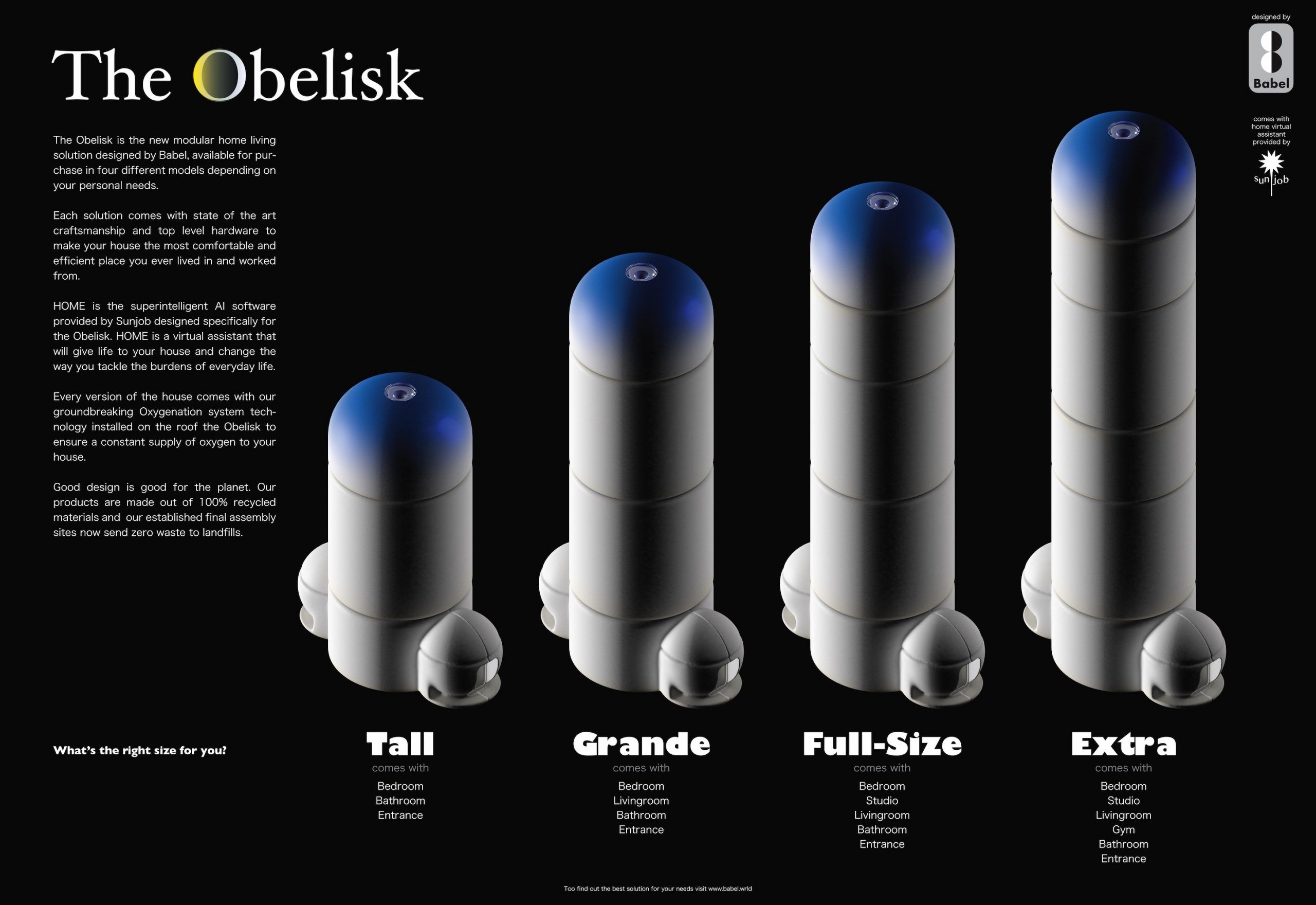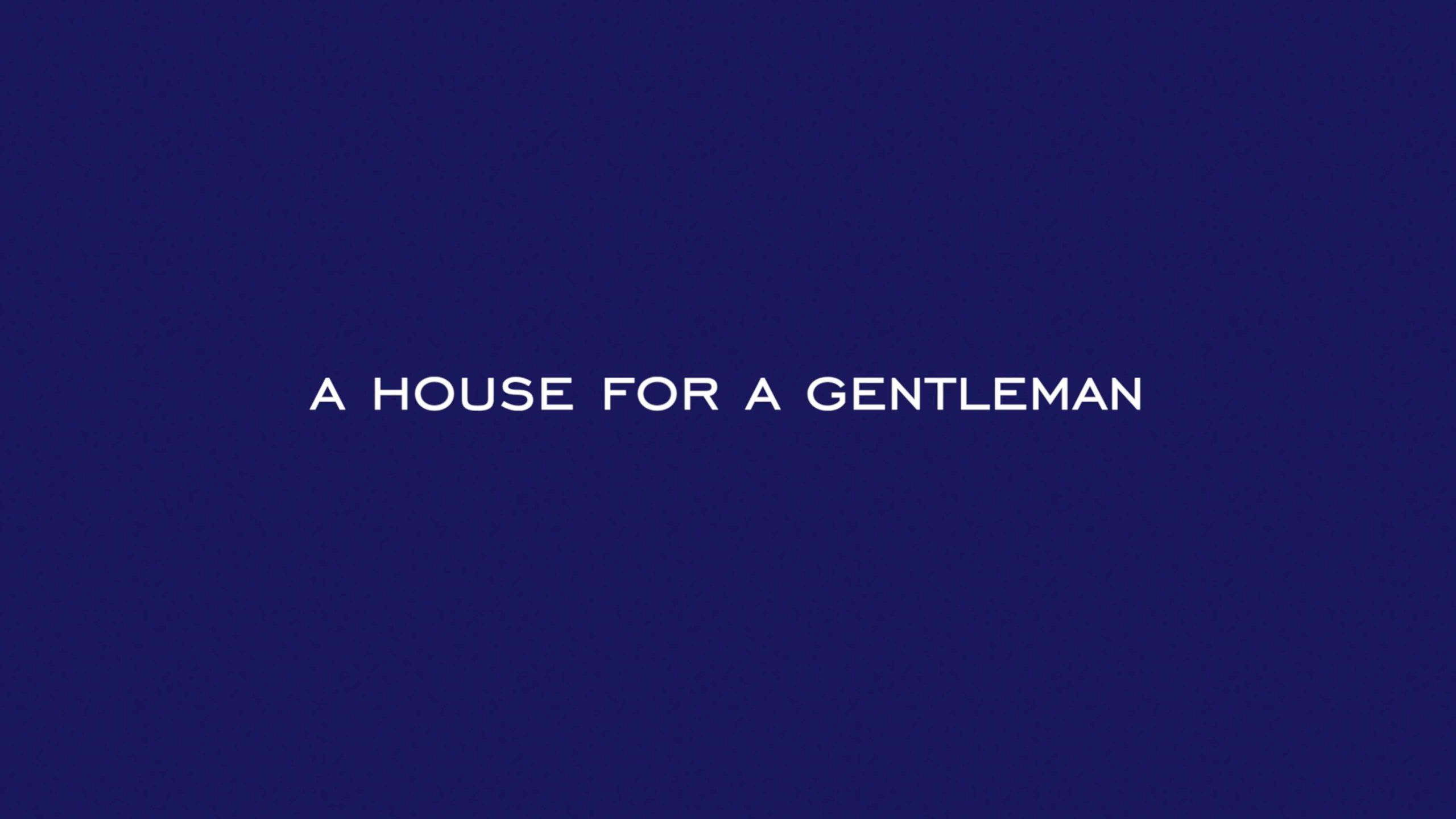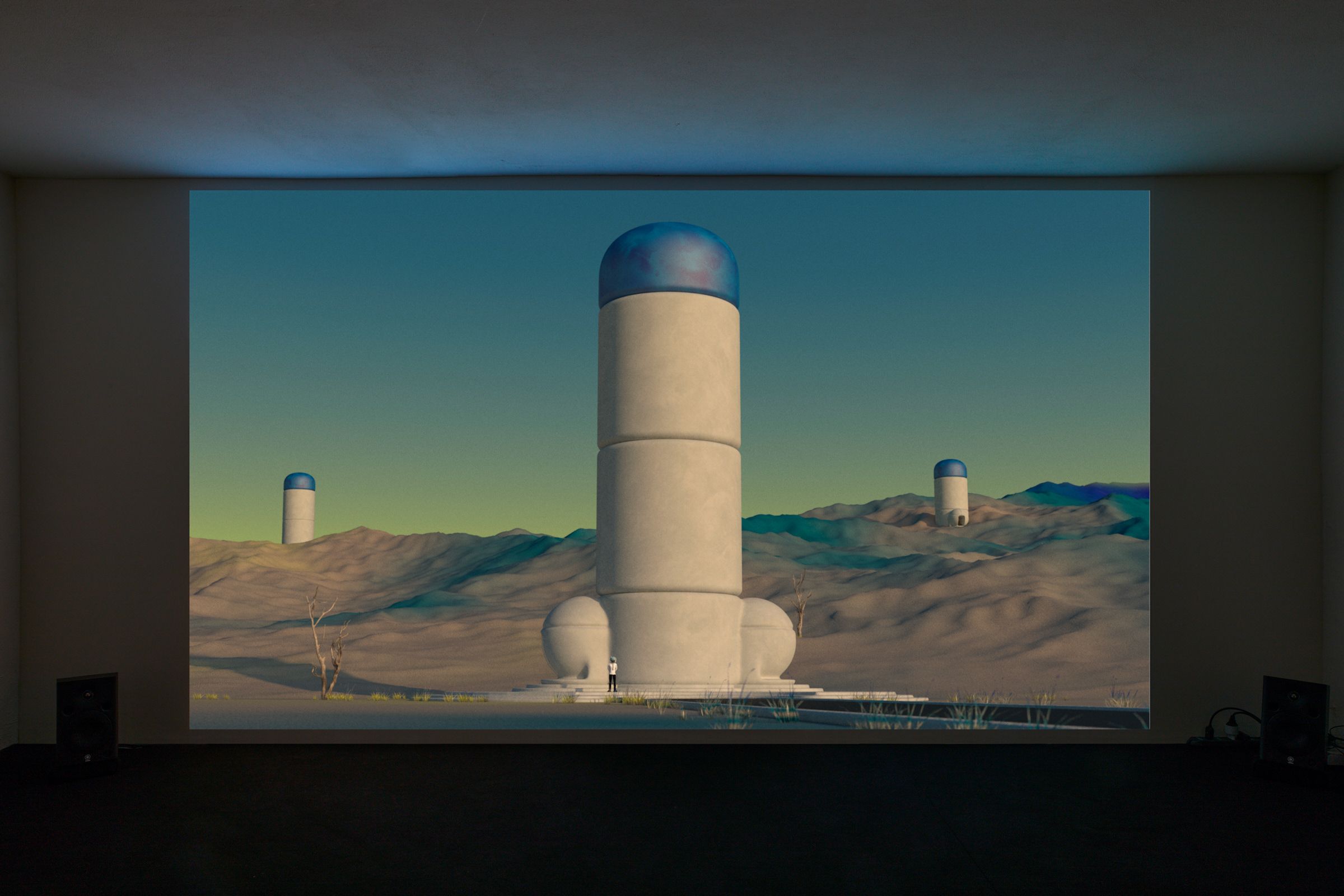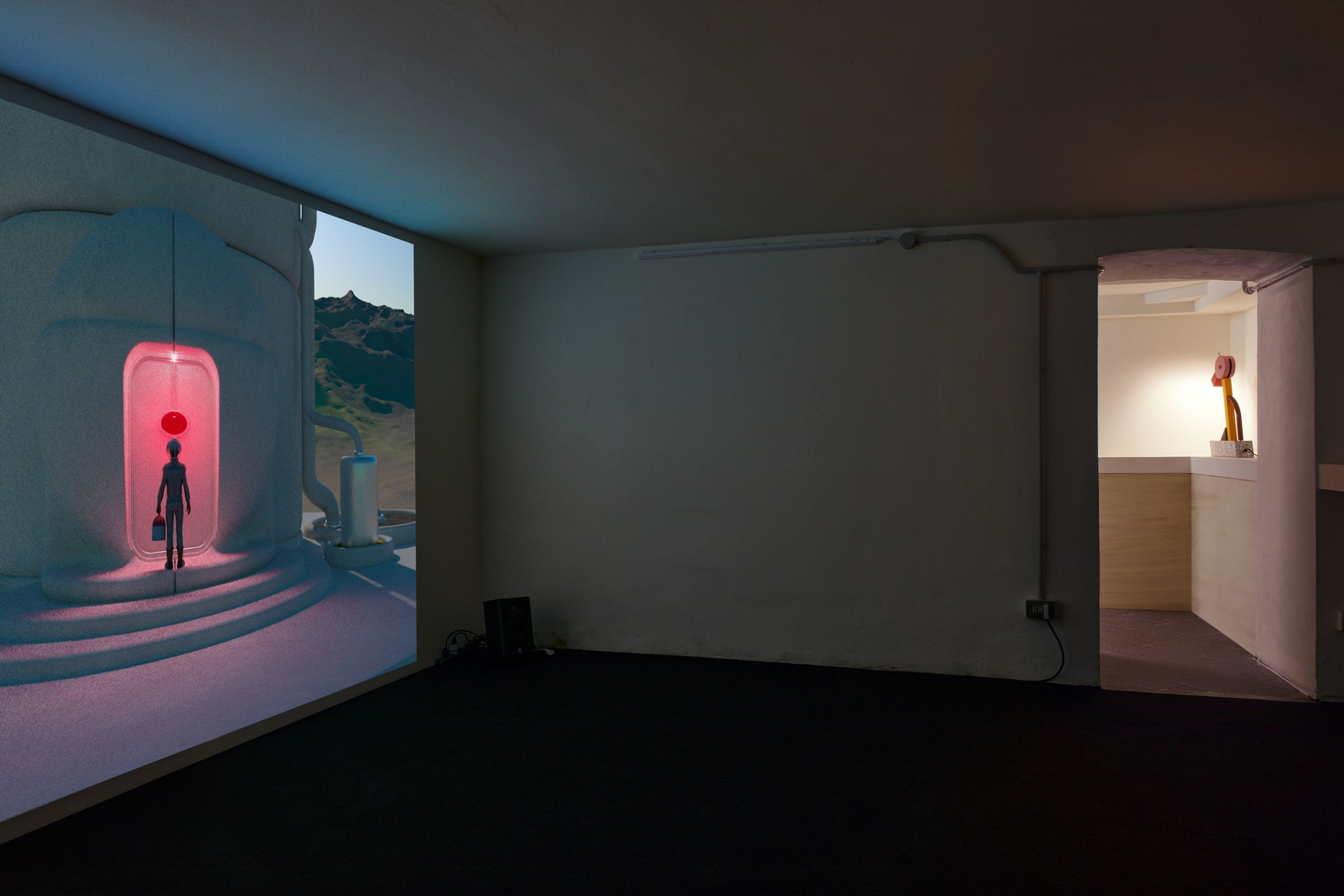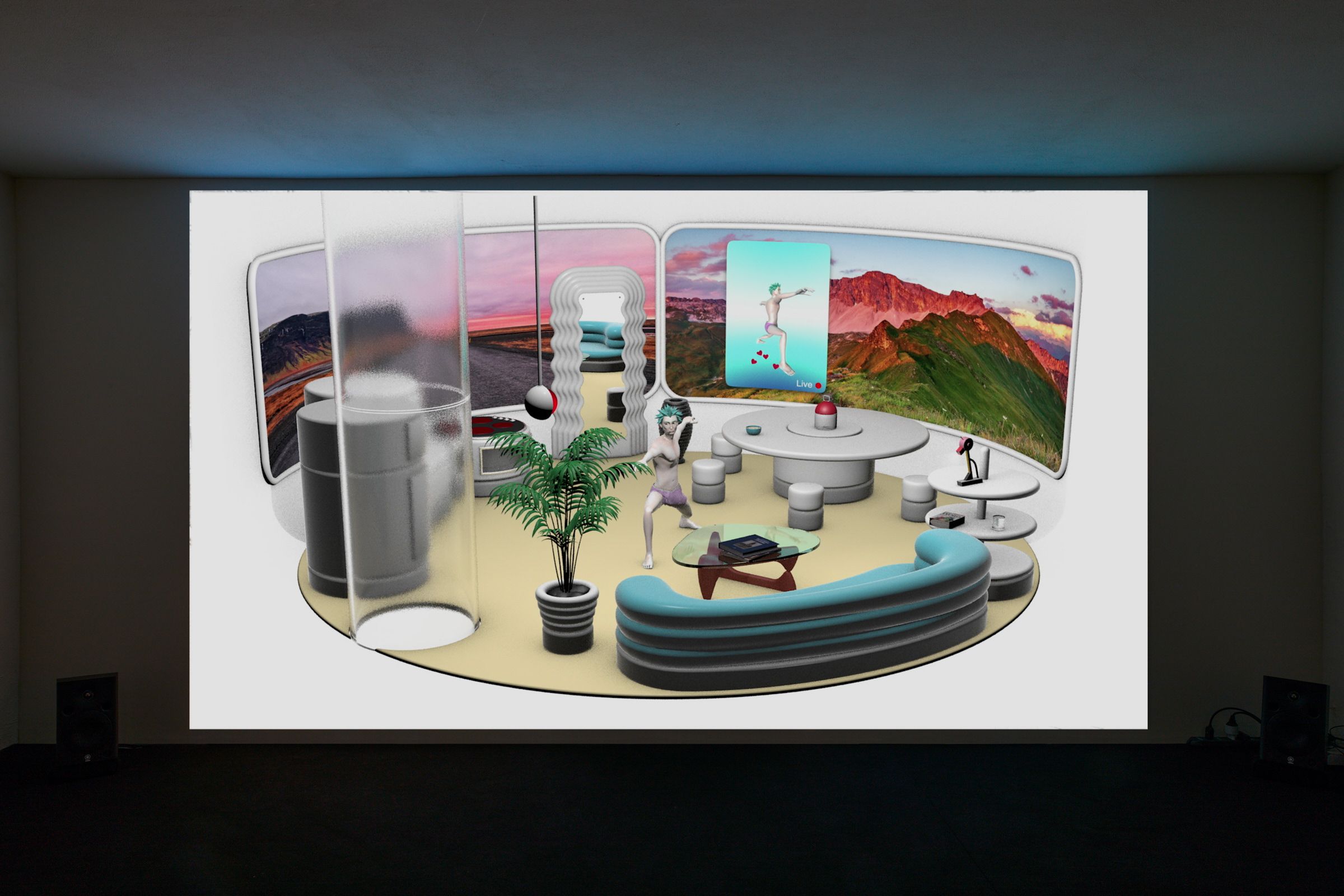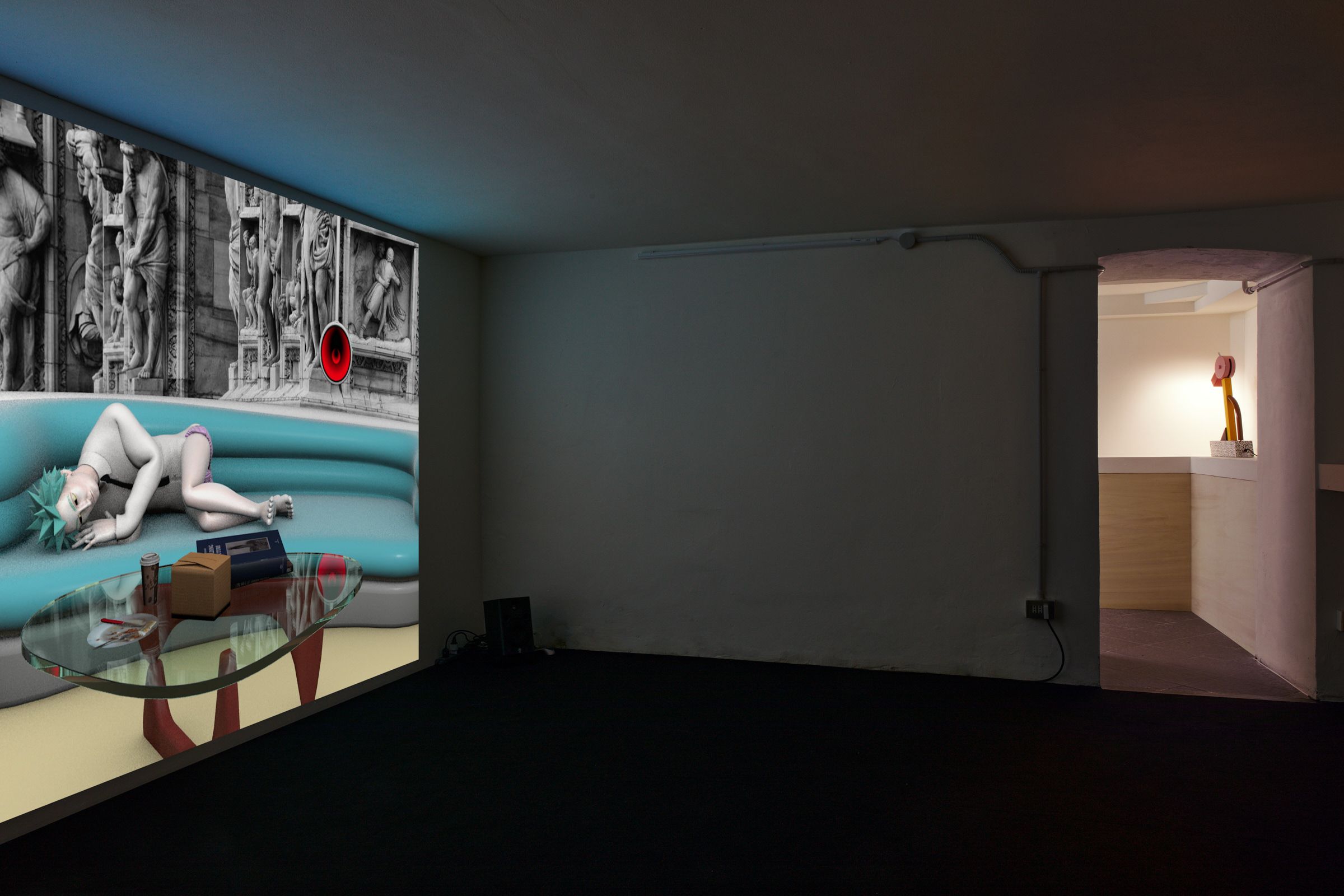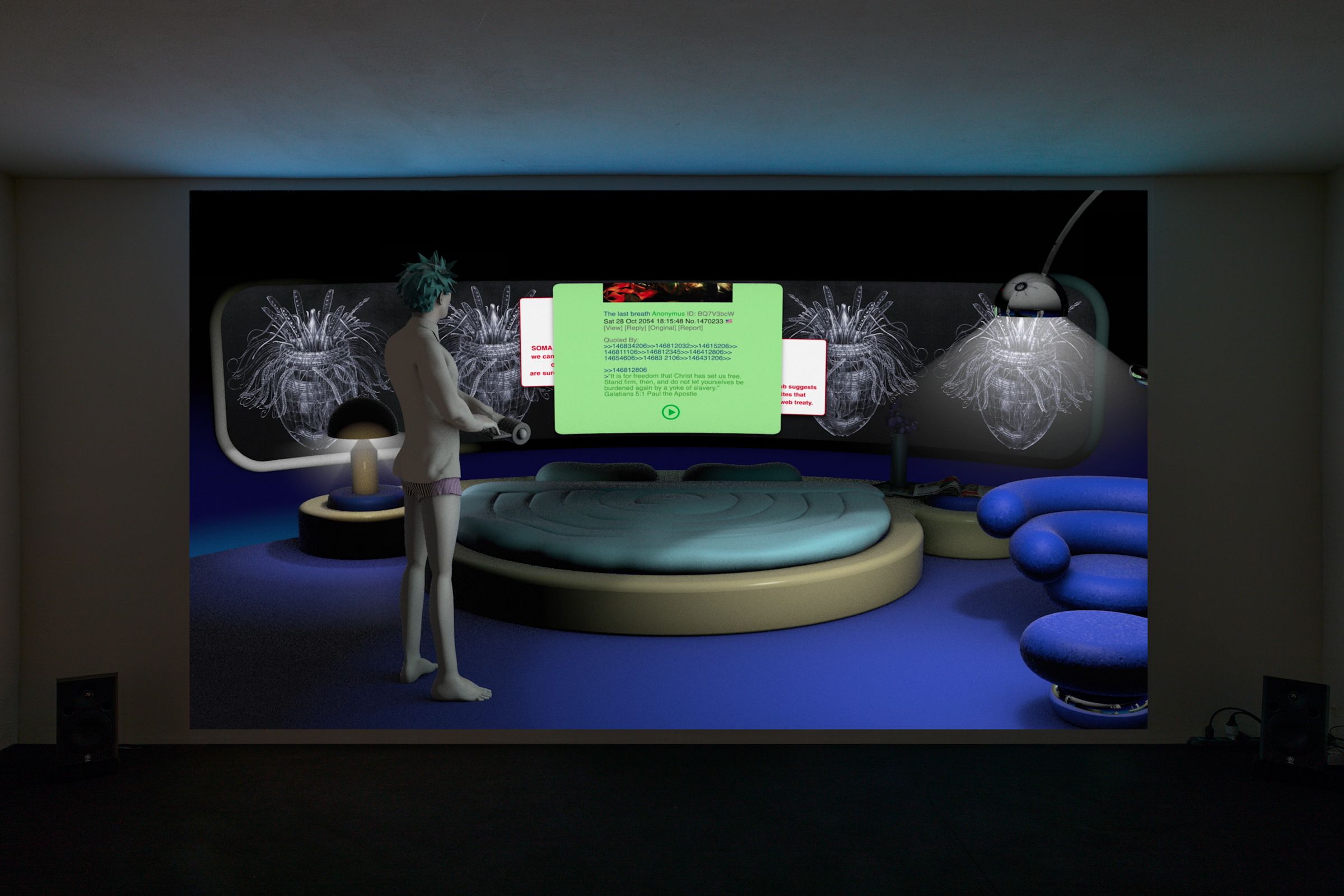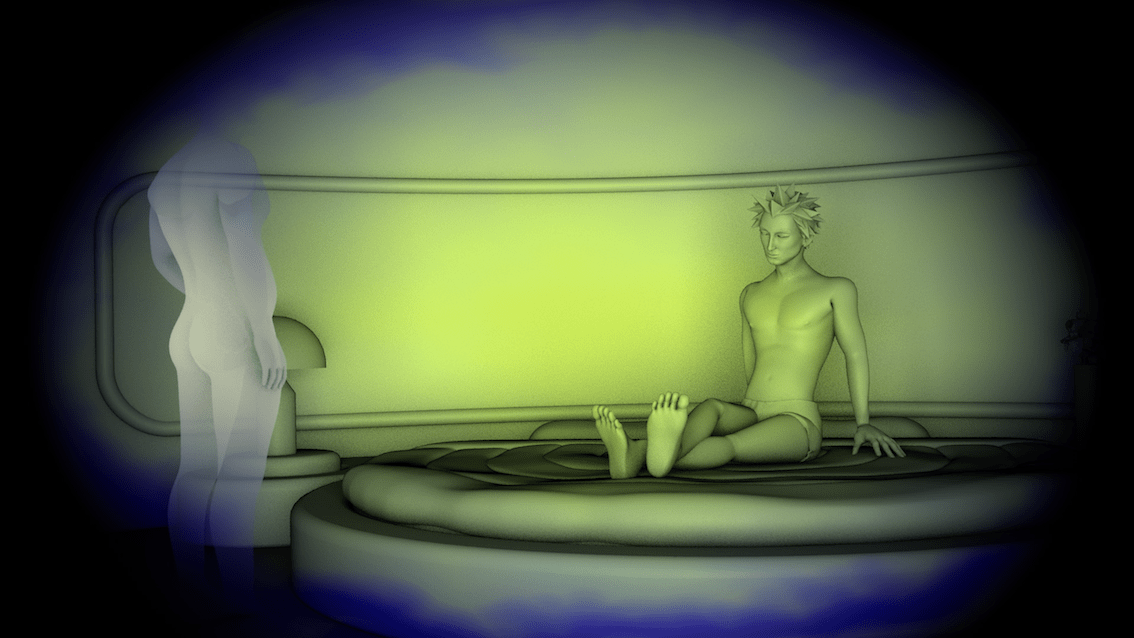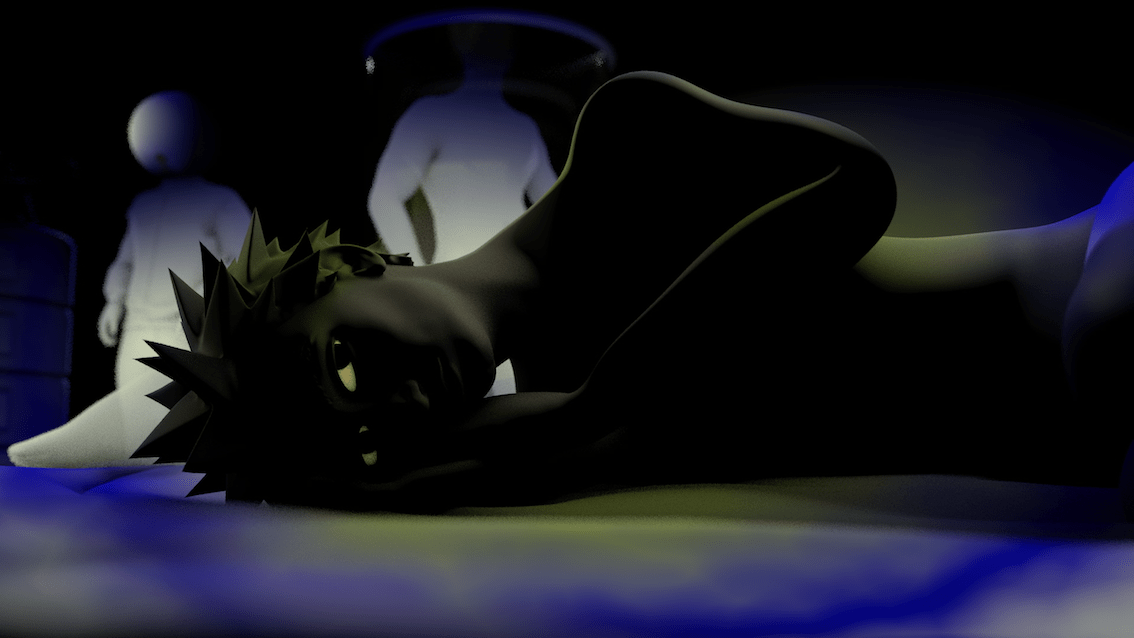Case Chiuse HQ Via Rosolino Pilo 14, Milano
March 16th - June 1st, 2022
GIULIO SCALISI / LIKE A TRUE GENTLEMAN
Case Chiuse #14 by Paola Clerico
Playing with characters, environments or different time settings,
I shift certain elements of our reality, while maintaining others,
to create a window on a possible, yet absurd, but still
frightening, because it’s almost believable, parallel world.
I believe that it’s at the brink of contradiction, that
someone can decide what it’s true for themselves.
Giulio Scalisi
Case Chiuse HQ presents Like a True Gentleman, the solo show by Giulio Scalisi in collaboration with Kunsthalle Lissabon, Lisbon.
The exhibition revolves around A House for a Gentleman, the video work in CGI that tells the story of a day in the life of a man, set in a dystopian not-so-distant future: 2048. On entering, we find ourselves in Paul the protagonist’s world, where certain elements of the display reflect his home. We hear his dialogues and his thoughts, from which the various contradictions of our own era emerge. Introspection and irony thus constitute the distorting lens through which Scalisi explores our own society.
Paul lives on an Earth where the air no longer contains enough oxygen and, just like the rest of humanity, he is forced to spend most of his time indoors. Isolated and sealed in, at the same time he is observed by pervasive and taming forms of technology. This is the channel via which the outside world flows inward, from reality to social media, from interpersonal relationships to work and so on.
Paul: To wish for the unexpected in an
airlock chamber is a losing game.
The video ends where the exhibition starts. The first room displays a series of fifteen portraits of Paul, attributed to his lovers, whom he leaves with no apparent sense of remorse, ‘like a true gentleman.’ From the story, the fragility of the individual due to a lack of social interaction and contact with reality becomes evident. In order to escape his sense of alienation, Paul feeds his obsession with the representation and elaboration of his own image, expressing it through his portraits or selfies on social media, feasting on the serotonin boost given by the likes received. The portraits show a clear need to be seen1 and at the same time represent a tool of investigation of the personality, revealing its complexity2 while strengthening a sense of vanity. There is something playful and romantic about toying with one’s own image3, and this circulation fuels an economy of affection, of self-spectacularisation.4 The transformation of the concept of the individual, which began in the XX century, driven by social, cultural and gender forces, it is a consequence of the ever-changing dimension of the subject.5 Indeed, one portrait is never the same as another, and Paul’s, preserved meticulously in plastic envelopes, serve as a tangible testimony of his own existence.
Paul: They pay their toll [with a portrait], and
I’m reminded that I exist outside of my own perception.
But sometimes, to their eyes, I look like that man in my mind.
I hate that.
Moving on to the second room, we come to another element of the story: The Obelisk. It’s a dick-shaped modular living solution available in various sizes. The home and its interiors have always reflected the aspirations of its occupants, of their position in relation to the society they live in and how they wish to appear.6
Like in a real estate showroom, the space features posters from the advertising campaign, complete with a 3D model, designed to explain to future homeowners the efficiency of The Obelisk and its ability to provide oxygen. Each building is equipped with HOME: the virtual and omnipresent assistant constantly connected to its inhabitant, which assists, regulates, advises, foresees and oversees every possible action. It’s an artificial super-intelligence developed by Sunjob: the tech company that Paul works for, and as is often the case, it’s a technology that alters our behavior and the way we relate to reality.
The poster Do yourself a favor on the other hand explains the serious risks involved in outdoor living. It’s clear how humanity has failed to stop the climate crisis and that major corporations have gained the upper hand.
HOME: It’s strongly recommended to not leave the house
without an oxygen mask. If you need anything from outside is
suggested to ask for a delivery or to schedule for
one of the many transportation solutions.
The inhabitants of this Earth are not allowed to freely explore the outside world, but even the virtual world they have access to – the metaverse – has its own rules and restrictions.
In addition to HOME, Sunjob has also developed a self-censorship system: SOMA. It’s an AI which intervenes in everything users do on the internet. SOMA regulates, alters and in some cases even censors all the contents put online at the source. This creates a sort of normalised and sterilised communication designed to protect the sensitivities of a global usership.
You don’t even know what you are talking about
when you have a machine talking for you!
The only way out of this control society is to disconnect all the virtual assistants and enter the dark web, where self-censorship is not applied and thought is free, but where conspiracy theories run amok. The protagonist follows one of these theories, according to which the need to breathe is the result of a mental conditioning carried out by doctors at birth. This sect, through practices of meditative apnea, encourages its followers to break away from the limitations imposed by nature so as to finally become free human beings.
Why must we breathe
when there’s no longer oxygen in the air? (…)
Why do babies cry when they start breathing? (…)
Do not let yourselves be burdened again by a yoke of slavery.
Sunjob, Damazon, Babel, Supple
and many others — the corrupt masters.
Whoever controls the oxygen supplies rules this great land.
With this exhibition, Giulio Scalisi further develops his research into the mechanisms underpinning Western society. Through a process of deconstruction, simplification and emphasis, he reformulates the alphabet of a possible future scenario, and captures the innate voyeuristic curiosity that we all share and that amuses us so as to spy on a day in Paul’s life. The result is a short circuit between the comical and the tragic. On one hand, we cannot but laugh at the idea of living in a dick-shaped house, while on the other, we cannot but empathise with the way he lives, in a dystopian reminiscence of our own era.
A very special thanks to Charlie Vezza, for the loan of the Tahiti lamp (Memphis Milano, Ettore Sottsass, 1981), and to Alberta Romano / Kunsthalle Lissabon.
1 JM. Prévost “Il bisogno di essere visti ” in Dancing with Myself, Punta della Dogana, Venice, exhibition catalog edited by M. Bethenod and F. Ebner, Marsilio Editori, Venice, 2018, p. 64.
2 Melissa Harris “Role Play”, leaflet the exhibition at Osservatorio, Fondazione Prada, Milan, 2022, p. 2.
3 M. Bethenod and F. Ebner “Dancing with Myself in Venice”, ivi, 2018, p. 18.
4 JM. Prévost, 2018, p. 64. | 5 M. Bethenod and F. Ebner, 2018, p. 18.
6 D. Schreiber “At the Edge of the World. Privacy and Publicity in the Art of the Interior” in Homebase. The Interior in Contemporary Art, exhibition catalog edited by H. Zilch and L. Seyfarth, Kerber Art, Bielefeld and Berlin, 2016, p. 189.

